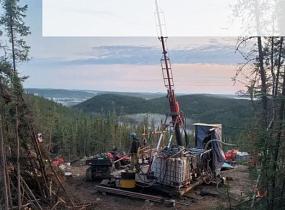Toronto mining company eyes rare earths near Uranium City
James Sykes said he needed just a few seconds with a hammer and a pry bar to knock a 60-kilogram hunk of rock from an outcrop just south of Saskatchewan’s border with the Northwest Territories a couple of years ago.
The veteran prospector liked what he found.
“We have surface showings. That (rock) was 40 per cent rare earth oxide,†said Sykes, who has spent his career exploring for uranium and, along the way, helped discover several major deposits in northern Saskatchewan.
Today, Sykes is the vice-president of exploration and development at Appia Energy Corp., a Toronto-based junior mining company aiming to capitalize on a growing interest in developing a new supply of rare earth elements in Saskatchewan.
While Appia Energy’s exploration of its Alces Lake property about 20 kilometres east of Uranium City, Sask. is in the very early stages — drilling on an area about the size of a city block began last year — Sykes said he is optimistic about the future.
“The room for growth is huge here. Being a geologist, I’ve come across areas where you hit these little sniffs and then they don’t lead to anything … What we’re seeing here, these aren’t little sniffs. These are signs we’re onto something much larger,†he said.
The 17 rare earth elements are not all that rare, despite what the name suggests. According to the Saskatchewan Research Council (SRC), they are abundant but rarely found in large concentrations, which makes extraction expensive and time-consuming.
They are also important, and expected to become even more so amid a changing global economy. Rare earths are used to produce hand-held electronics, electric car batteries and in a variety of defence applications; SRC expects demand to “skyrocket.â€
The Saskatchewan government believes trade uncertainty with China, which produces around 90 per cent of the world’s rare earths, will lead customers — especially the U.S. — to seek out more stable supplies of rare earths, ideally from Saskatchewan.
Shaun Spelliscy, who runs the exploration company Gem Oil Inc., said most known rare earth deposits are in the north, where exploration is costly and complex metallurgy makes extraction difficult. At the same time, he said, a significant deposit close to infrastructure is likely on the horizon.
“In my estimation less than 10 per cent of the province has been adequately mapped for economic mineralization. This means there is massive potential, especially within and close to known mining areas that have been developed for decades,†he said in an email.
Sykes said Appia would have little chance of developing the project without SRC, which is working on a pilot plant to extract rare earth elements from various ores in a way it hopes will be both price-competitive and more sustainable than other countries’ efforts.
The Crown corporation has indicated it’s looking at the possibility of scaling up to a commercial pilot plant.
“You need supply, and that’s what we’re working on our end. If you have supply, you need to be able to process it (and) rare earths are dependent on the processing, more than anything else … With SRC, they’ve got the plant, they have the expertise,†Sykes said.
“They’ve literally written the book on it. They have everything in place.â€
Appia hopes to send its samples to SRC for processing this summer following its submission of a proposal under the new Canada-U.S. Joint Action Plan on Critical Minerals, which, according to Ottawa, will lead to various joint initiatives to help improve “critical mineral security.â€
While the company still needs to establish exactly what resources its property holds before looking for funding to build the open-pit mine it envisions building, Sykes said he is extremely encouraged by what little exploration has been done on the remote site to date.
“This is world-class.â€
Comments
There are 0 comments on this post






